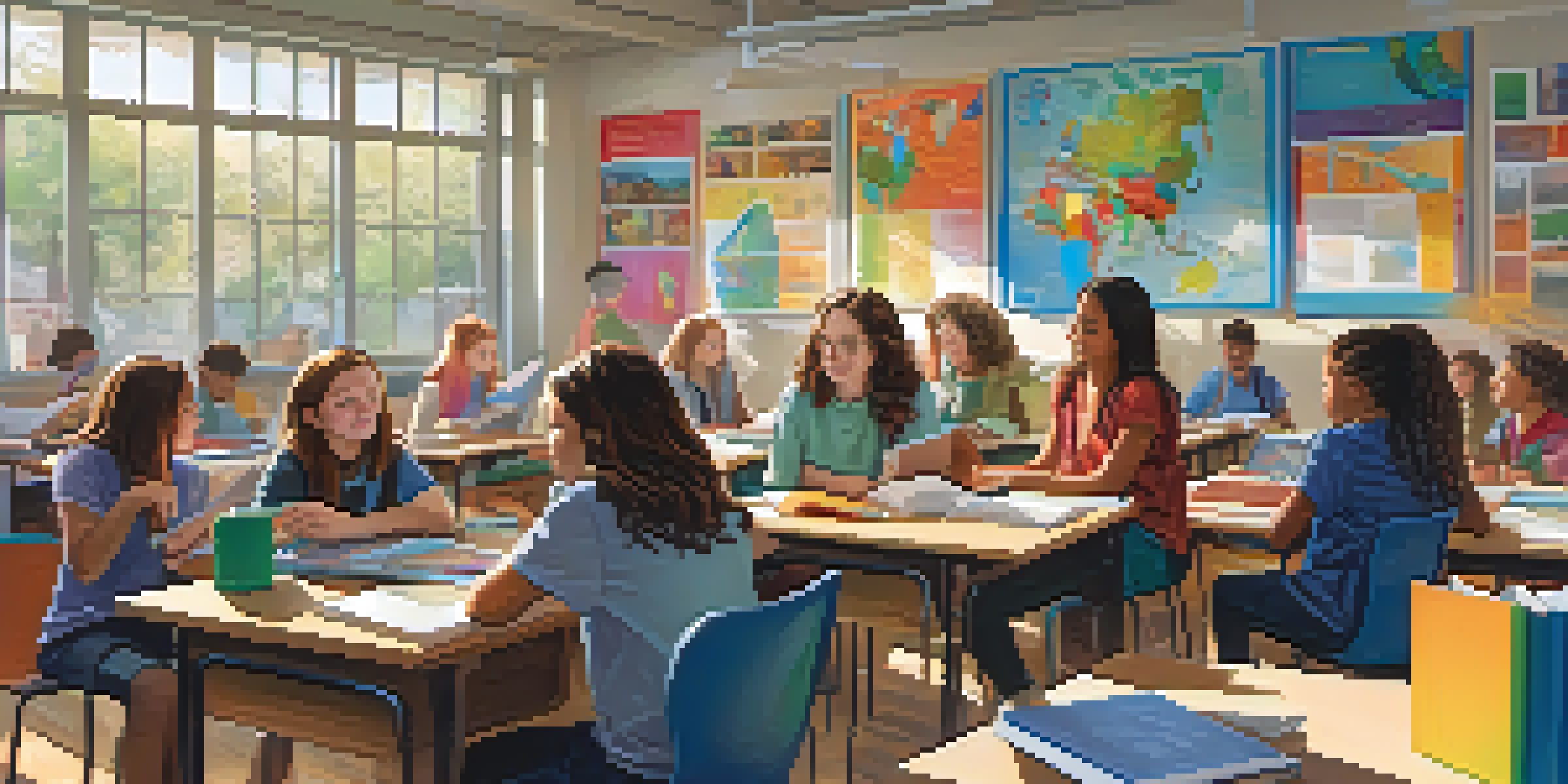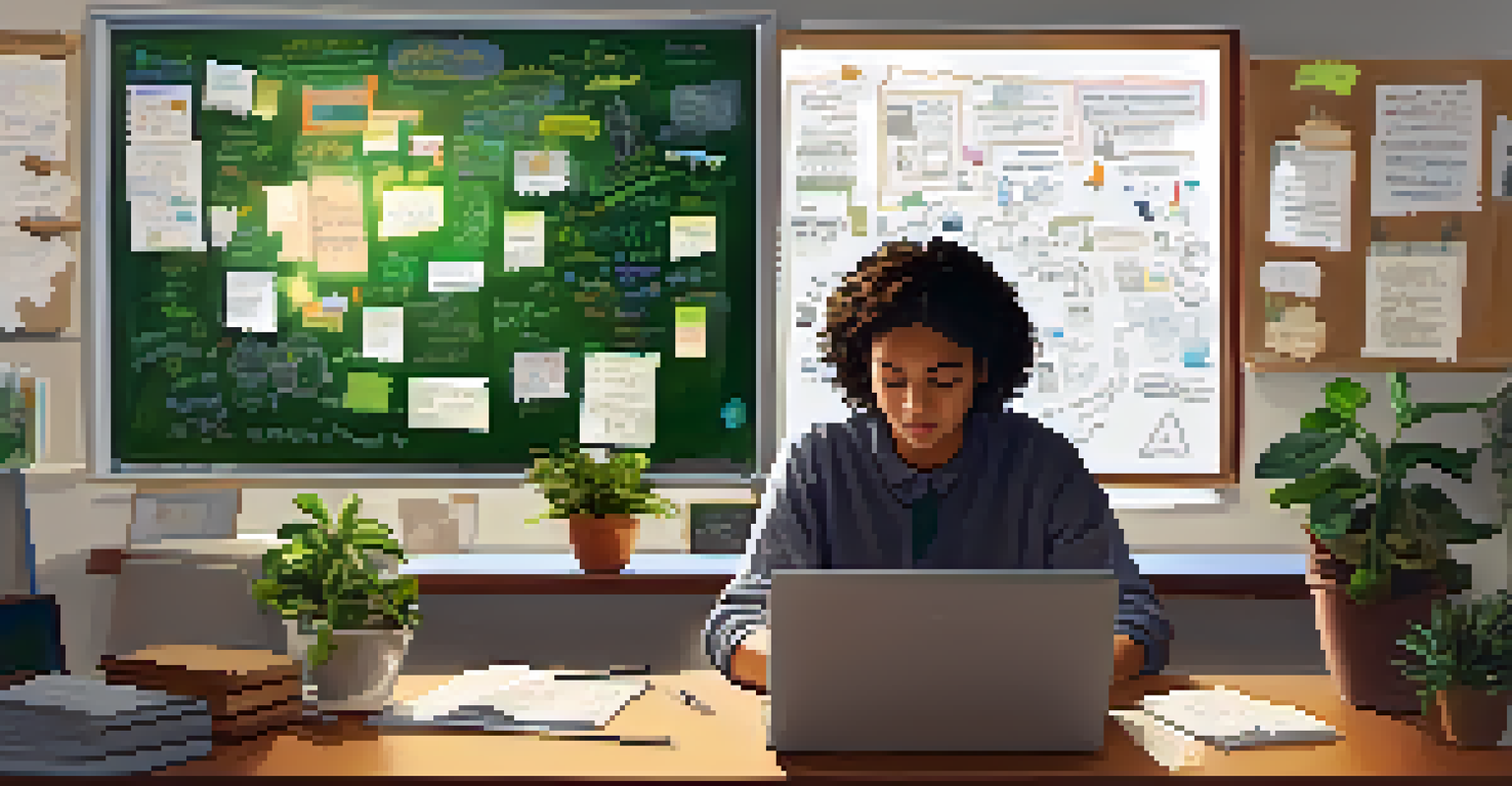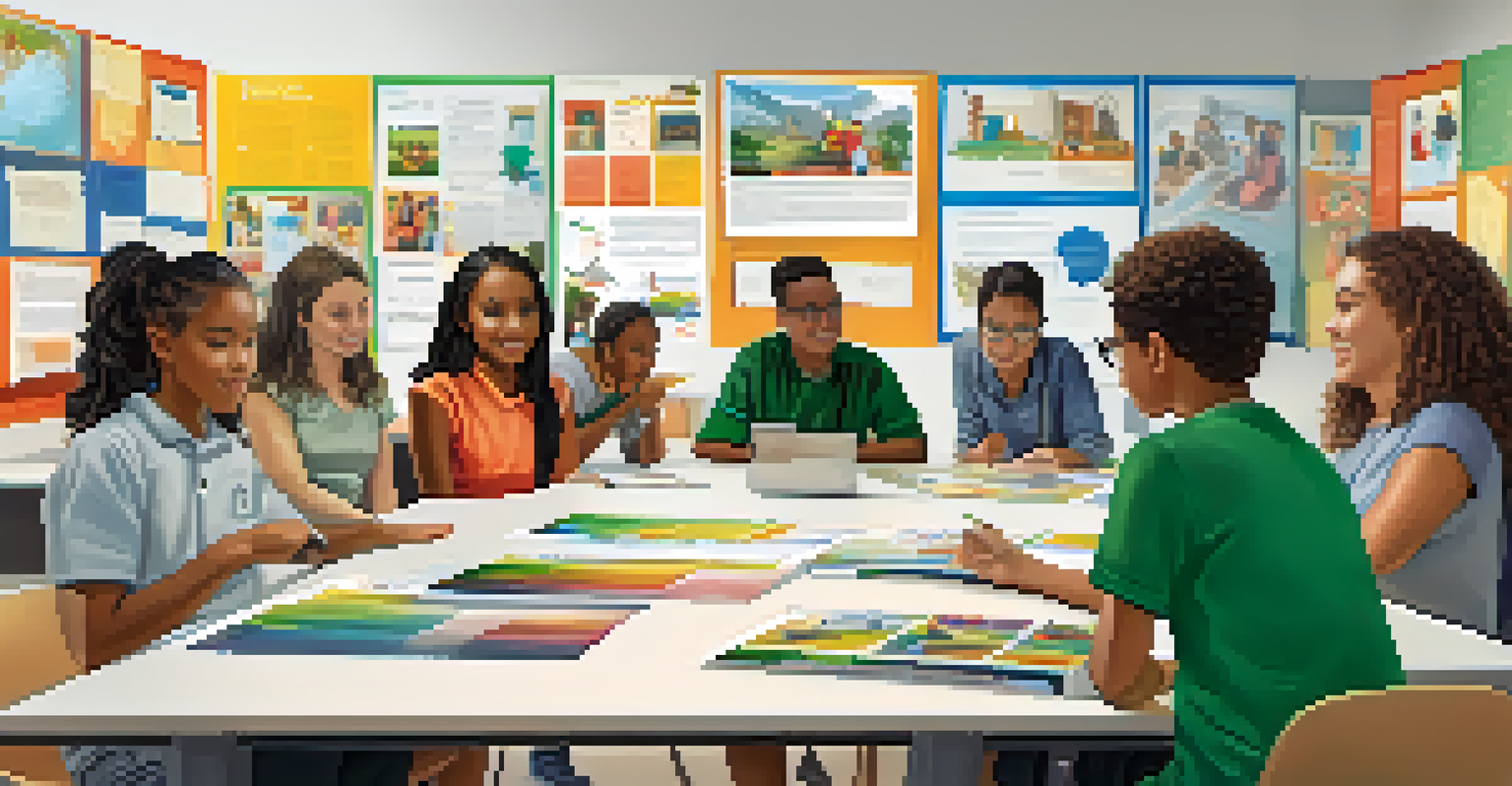Student-Created OER: Empowering Learners as Producers

Understanding Open Educational Resources (OER)
Open Educational Resources, or OER, are teaching and learning materials that are freely accessible and openly licensed. This means anyone can use, modify, and share them, making education more inclusive and adaptable. For students, OER can range from textbooks to multimedia resources that enhance their understanding of various subjects.
Education is the most powerful weapon which you can use to change the world.
The concept of OER is rooted in the belief that education should be accessible to all, regardless of socio-economic status. By leveraging the power of the internet, OER breaks down traditional barriers to knowledge, allowing learners to find and use resources that fit their needs. This democratization of education encourages exploration and innovation among learners.
In essence, OER not only supports teachers but also empowers students to take charge of their learning journey. By engaging with these resources, students become active participants in their education, fostering a sense of ownership and responsibility. This sets the stage for one of the most exciting trends in education: student-created OER.
The Role of Students as Producers
Traditionally, students have been seen as consumers of knowledge, absorbing information from textbooks and lectures. However, the rise of student-created OER flips this narrative, allowing them to become producers of educational content. This shift not only enhances their learning experience but also cultivates critical thinking and creativity.

When students create their own OER, they engage deeply with the material, requiring them to synthesize information and present it in their own words. This process encourages them to explore different perspectives and develop a more nuanced understanding of the subject matter. It’s akin to teaching someone else; the act of explaining solidifies their knowledge.
Empowering Students as Creators
Student-created OER transforms learners from passive consumers of information into active producers, enhancing their engagement and understanding.
Moreover, this production process fosters collaboration among students. They can work together on projects, share ideas, and provide feedback, simulating real-world teamwork skills. This collaborative approach not only builds community but also prepares them for future careers where such skills are essential.
Benefits of Student-Created OER
One of the most significant benefits of student-created OER is the development of important skills. As they create content, students improve their research, writing, and digital literacy skills. These competencies are crucial not only for academic success but also for their future careers in a digital world.
The best way to predict the future is to create it.
Additionally, student-created OER can lead to more relevant and relatable educational materials. Since students understand their peers’ learning challenges and interests, they can create resources that resonate more effectively. This relevance often enhances engagement and motivation among learners, making education a more vibrant experience.
Furthermore, by sharing their creations, students contribute to the broader educational community. Their work can help other learners who may struggle with traditional resources, fostering a culture of support and collaboration. It’s a win-win situation: students learn by creating, and their peers benefit from their efforts.
Challenges in Implementing Student-Created OER
While the idea of student-created OER is promising, it’s not without challenges. One significant hurdle is ensuring that students have the necessary skills and resources to create high-quality content. Educators must provide training and support to equip students with the tools they need to succeed in this endeavor.
Additionally, there can be concerns about the quality and accuracy of the content produced. Since students are not always subject matter experts, there’s a risk that misinformation could be disseminated. To address this, a robust review process should be established where educators and peers evaluate the content before it is shared widely.
Collaboration Enhances Learning
Creating OER fosters collaboration among students, simulating real-world teamwork skills and building a sense of community.
Lastly, time constraints can be a barrier. Students often juggle multiple responsibilities, and dedicating time to create OER can be challenging. Educators should find ways to integrate OER projects into the curriculum, making them a part of the learning process rather than an additional task.
Integrating OER into the Curriculum
Incorporating OER into the curriculum can be a game-changer for both educators and students. By aligning OER projects with learning objectives, educators can create meaningful assignments that enhance student engagement. This not only enriches the educational experience but also encourages students to take ownership of their learning.
One effective approach is to allow students to choose topics that interest them within the framework of the curriculum. This autonomy can lead to more passionate and invested projects, as students are more likely to engage deeply when they’re enthusiastic about the subject matter. It’s like giving them the keys to their own educational journey.
Moreover, educators can leverage technology to facilitate collaboration and sharing. Tools like online platforms and social media can help students connect with a wider audience, showcasing their work and receiving feedback. This exposure not only motivates students but also helps them understand the impact of their contributions.
The Future of Student-Created OER
As education continues to evolve, the future of student-created OER looks bright. With advancements in technology and an increasing emphasis on personalized learning, students have more opportunities than ever to create and share their own educational resources. This trend aligns with the growing recognition of student agency in the learning process.
Moreover, the global nature of the internet allows students to connect and collaborate with peers from around the world. This cross-cultural exchange can enrich the content they create, as diverse perspectives lead to more well-rounded OER. It’s an exciting time where learning transcends geographical boundaries, fostering a global community of learners.
OER Makes Education Accessible
Open Educational Resources (OER) provide freely accessible materials that democratize education and empower students.
Ultimately, embracing student-created OER can reshape the educational landscape, making it more inclusive, engaging, and innovative. As we move forward, it’s essential that educators, institutions, and policymakers support this movement, ensuring that learners are empowered not just as consumers of knowledge, but as active producers who shape their own educational narratives.
Conclusion: Embracing Student-Created OER
In conclusion, student-created OER represents a significant shift in the educational paradigm, promoting creativity, collaboration, and critical thinking. By empowering learners to produce their own resources, we not only enhance their educational experience but also prepare them for a world that values innovation and adaptability. It’s a powerful reminder that education is not a one-way street; it’s a dynamic exchange between students and their learning environment.
As we embrace this new approach, it’s crucial for educators to provide the necessary support and guidance. By creating a safe space for experimentation and collaboration, we can inspire students to take risks in their learning. This encouragement can lead to remarkable outcomes, both academically and personally.

Ultimately, the goal is to cultivate a generation of empowered learners who are equipped to navigate and contribute to an ever-changing world. With student-created OER, we’re not just teaching; we’re fostering a culture of innovation, creativity, and lifelong learning that benefits everyone.